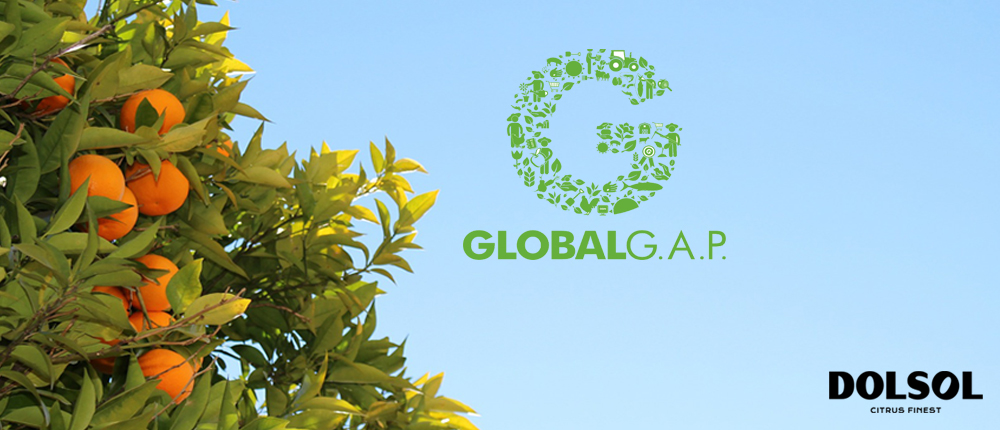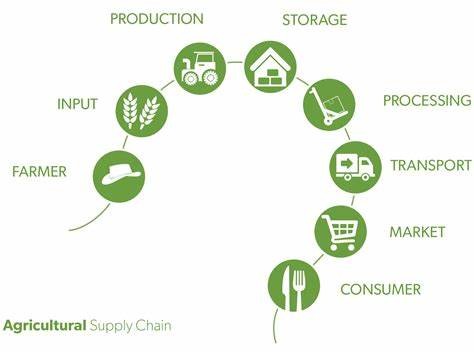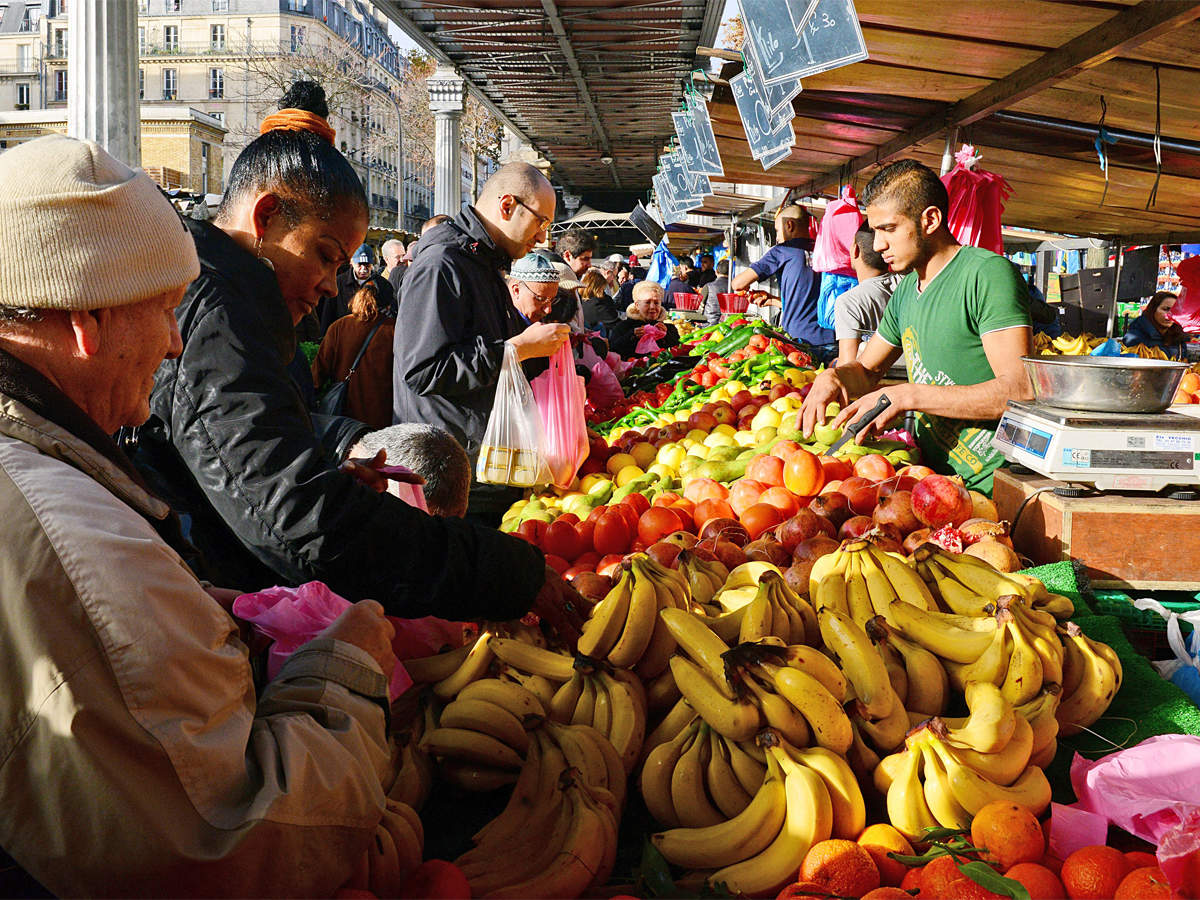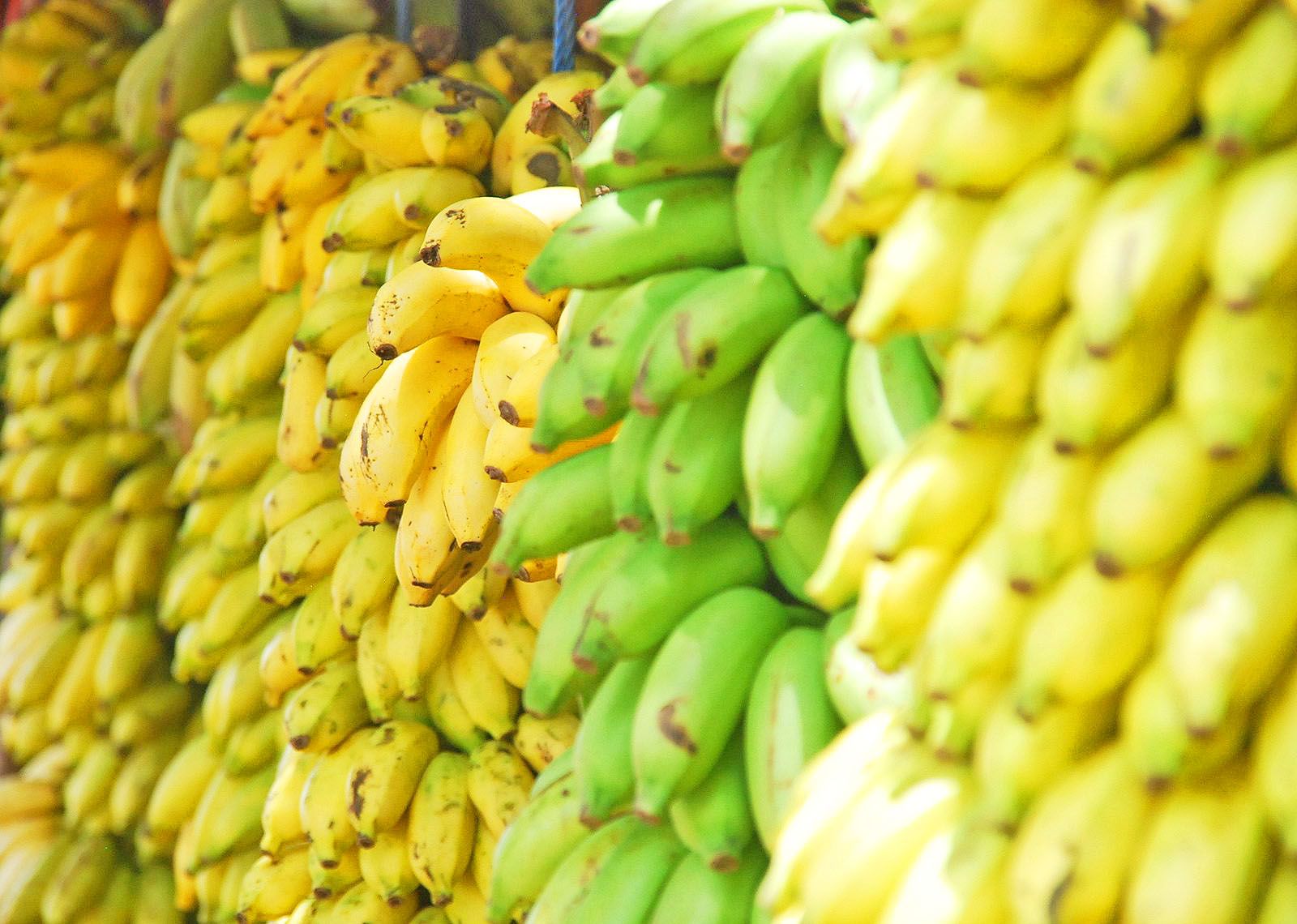SHIPPING FRESH PRODUCE: WHAT YOU NEED TO KNOW
Shipping fresh produce is a high-paced industry because of the effort it takes to make deliveries within a short timeframe. There is a lot to coordinate to make sure everything shows fresh and ready for consumers. If a shipment pickup time or delivery schedule is late, it means a day or more of freshness is lost.
When shipping fresh produce, the objective from start to finish is to move fresh produce quickly and safely. However, there is a lot to know about how it all happens including proper temperatures, what crops are growing when and where everything is heading once loaded on a truck.
Transporting Produce Safely
Produce is sensitive freight due to the varying items and the individual shelf life timelines. The same applies when you are learning how to transport ice cream. If shippers or trucking companies fail to use guidelines, the fast-paced process of transporting items grows riskier.
However, when dealing with produce and other food items intended for consumption, there is no wiggle room when it comes to safety. Think about it; what makes produce so inviting at the grocery store? In most cases, one of the top responses is likely the appearance. The common denominator of maintaining quality appearance along with the overall freshness of produce is to plan transport ahead of time. It means trucks can be ready when the fruit and vegetables arrive at the dock, not flagged for safety violations.
The Food Modernization Safety Act or FMSA, passed in 2011 and implemented in 2017, focuses on maintaining food safety that involves transporting produce. The act, under the direction of the FDA, requires vehicles transporting food to adhere to strict standards. The goal is to prevent illness due to contaminated food.
Requirements under the FMSA:
- Vehicles must be clean; able to be cleaned to prevent contamination
- Kept at safe temperature during transport
- Proper training required by carriers
- Documentation of compliance
Shippers looking to secure capacity for produce loads should verify that the trucking company is compliant with FMSA. Making the decision upfront to ensure the vehicles hauling produce are capable of the job saves time and money.
This is where the shipper and trucking company form a partnership. The shipper’s interest is to keep the product save for sale and consumption. The trucking company wants to provide quality service. Delivering a bad load of produce to market does not fare well for all involved. The trucking company and the shipper should communicate regularly discuss pertinent information about the freight to maintain freshness and safety.
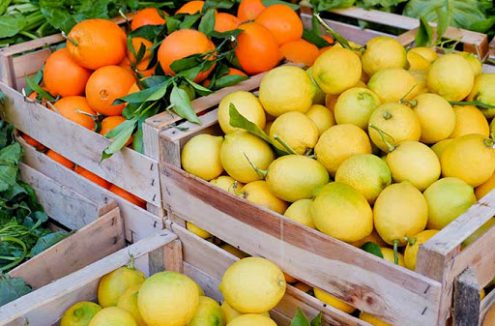
Produce Temperature Matters
Transporting produce can present a challenge because of temperatures that are maintained during the cold chain logistics process. The fragile nature of fruits and vegetables is a major part to consider whenever goods are loaded for shipment. Remember this is not one temperature fits all.
The need to have regulated temperatures set while delivering produce is necessary to maintain quality. In addition, the delivery must arrive on time. Altering either situation may jeopardize the produce shipment. So just a slight degree or two difference in the truck could be a negative move for sensitive produce.
Suggested temperatures for transporting produce range from freezing at 32 degrees to as high as 50-60 degrees depending on the item. The bill of lading with each shipment should detail the exact temperature required for the trailer. Drivers should be aware of the type of produce and keep a close eye on gauges to avoid any problems during transit. The driver can adjust temperatures as needed.
In the range of 32-36 degrees is good to ship items like apples, blueberries, broccoli, cantaloupes, grapes, oranges (Florida), peaches, packaged salad greens, and strawberries.
Avocados and cranberries are safe to travel at temperatures between 38-40 degrees. At between 40-45 degrees late crops of potatoes, honeydews and green beans ship well. Take temperatures to an even warmer range of 45-50 and cucumbers are happy along with watermelon, eggplant lemons and grapefruit grown in Florida and Texas.
The warmest temperature advised for produce to ship is 55 degrees to 60 degrees. Here is where early crops of potatoes remain fresh during transit. The temperature range is also good to ship bananas, tomatoes, and grapefruit from Arizona and California.
Refrigerated trucks or reefers are ideal to transport produce. The ability to adjust the temperature as needed makes it suitable to ship a variety of freight that requires a chilly ride.
Florals in Produce Section
Fresh flowers are an item found in the produce section that many may not give much thought to in a display case. However, floral blooms like fruit and vegetables are sensitive to temperatures, especially during transit. A refrigerated truck is best to deliver both the supply of flowers and produce.
On average florals need to ship in a refrigerated trailer at between 34-39 degrees. While that might be a little frigid for some produce varieties, it is a good range for others. Like produce, florals require special handling because of the delicate petals.
Similar to produce, once flowers are cut the rush is on to get them off to the market. Therefore, with flowers in the produce section, it makes it easy to pick up your weekly supply of fruit or vegetables along with a dozen fresh cut roses. Depending on the flower, the shelf life may actually last a little longer than the produce.
Consumers, according to the Produce Marketing Association (PMA), are also looking for the freshest florals, as they require for fruit and vegetables.
The Shelf Life of Produce
Not all produce is the same when it comes to shipping. The industry deems sensitive produce, with a short shelf life of a day or two, as light density. Next, produce that lasts 4 to 6 days is medium density. The heartier produce crops, those with a long shelf life in excess of a week rank in the high-density category.
High-density produce with a shelf life of 7 days or more include:
- Onions
- Potatoes
- Carrots
- Apples
- Cabbage
- Garlic
- Celery
Medium density produce with peak freshness on the shelf for 2 to 4 days includes:
- Oranges
- Broccoli
- Avocados
- Peppers
- Peaches
- Spinach
- Tomatoes
- Watermelon
Light density produce on the shelf for about a day or two includes:
- Melons
- Cucumbers
- Strawberries
- Bananas
- Corn
- Green Beans
- Grapes
- Lettuce
- Zucchini
The trucking company selected to transport the produce needs to know from the shipper exactly what the freight includes to ensure
Shippers are working against the clock to get produce to market so consumers can enjoy at the peak of freshness. The strict shelf life of produce is why shippers often prefer a dedicated trucking solution to ensure delivery. The longer it takes to get produce shipped after harvest, the higher the chances are items will spoil before reaching the shelf.
The pressure is high for shippers to secure transportation for produce to move quickly. An extra day freight remains on the dock could cost thousands of dollars in lost produce sales. Shippers work hard to know ahead of time how freight needs to move and find capacity with trucking companies. One misstep in this area and freshness levels decrease and shoppers will go elsewhere.
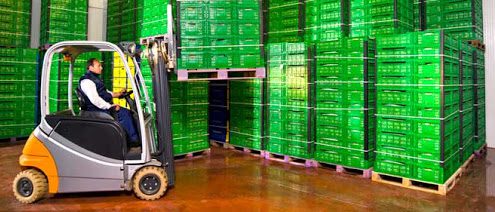
Produce By the Numbers
As shoppers select produce at the market, few are thinking about the industry and what it takes to ship fresh. According to the Organic Trade Association, organic fruits and vegetables generated $16.5 billion in sales in 2017, with all but $1.65 billion coming from fresh produce.
Consumers adopting healthier lifestyles often make fresh produce the star of the show as a main meal or snack. The trend the OTA highlights is that fresh translates to healthy for shoppers. Regardless, shippers continue to work hard to get fresh produce on a truck headed for stores near and far.
According to the Fresh Facts on Retail by the Produce Marketing Association:
- Produce ranks second in fresh sales
- Fruit is nearly half of produce sales followed closely by vegetables
- Berry varieties top fruit sales
- Bagged salad products are first in vegetable sales
The top selling produce in 2017 based on a survey by The Packer includes some favorite fruits and vegetables. While the full list ranks the top 20 in each category, we highlight the top five produce types.
Fruits
- Bananas 75%
- Apples 73%
- Grapes 65%
- Strawberries 63%
- Oranges 61%
Vegetables
- Potatoes 76%
- Tomatoes 72%
- Onions 73%
- Carrots 64%
- Lettuce 59%
Beyond the few basic items, a large variety of fruits and vegetables make up the overall fresh produce sector. Yes, all those fresh apples, crisp cucumbers and bunches of bananas help make up a thriving industry. The goal is to have fresh produce items on shelves, waiting for consumers to select.
In order for that to occur, it comes down to shipping fresh produce. Whether the distance is long or short, the objective is the same, provide fresh produce. The trucking company that consistently gets the job done may become the preferred vendor for distribution.
Shipping to Grocery Stores and Fresh Markets
The Produce Marketing Association reports that shoppers are particular about where they purchase their fresh fruits and vegetables. While supermarkets take the top spot for produce sales, specialty retailers emphasizing organic goods is gaining in popularity.
However, as the PMA highlights consumers also flock to markets featuring locally grown produce for the freshness factor. In considering freshness, many shoppers place importance on the distance the produce traveled to reach the shelf. A majority of consumers deem produce grown within the state as local thus meeting the fresh threshold. While others maintain a more strict definition.
Shoppers’ preference is why shipping fresh produce is an intense process to make sure freight reaches store shelves quickly. If the produce shipment is at peak freshness arriving in the market, it is a win for all involved. The retailer makes a good impression on customers; the shipper gets credit for providing quality products. The trucking company gets the stamp of approval for reliable dedicated service.
While the overall supply chain from farm to store is a multi-step process; customers are looking for the freshest items to fulfill a shopping list. Fresh produce often translates into repeat business for the retailer. Late deliveries effect whether customers can select fresh produce.
The neighborhood grocer was the only source for fresh produce, now specialty and big-box retailers have entered the mix. Today, shippers tackle the challenge of keeping a variety of marketplaces stocked with the freshest produce in season. The superstores usually process several trucks of fresh goods daily while smaller retailers may only receive a truck several times per week. Of course, the savvy shopper out there typically knows when fresh produce arrives at their favorite store. The weekly shopping trip, often scheduled on the same day, is to maximize choosing the freshest produce.
Seasonality of Produce
What fruit or vegetable crop is growing when and where is always a big question for those dealing with produce. The answer to that question determines what can ship when or how much stock is available. Shippers generally have a good handle on what crops are harvesting in order to keep supply moving to stores.
- Bananas — grow all year in Florida
- Apples – are a year-round crop in Oregon and Pennsylvania and grow at some point throughout the year in 46 other states and Washington, D.C.
- Grapes — grow mainly in California from mid-spring to early winter
- Strawberries – California by far grows the most strawberries
- Oranges – the sun helps oranges blossom year-round in Florida and California year-round, followed by Texas eight months out of the year.
- Potatoes – you will find potatoes growing in Idaho and California all year and a host of other states several months a year.
- Tomatoes – large tomato producers are Arizona, California, and Florida
- Onions — most of the year California and Florida are growing onions, with Illinois and Nebraska charting the next longest season
- Carrots – Alabama, Arizona, California, Mississippi, and Virginia grow carrots all year
- Lettuce – California and Virginia rank at the top for the 12-month season, followed by Georgia at 10 months a year.
By looking at the list of popular crops, a few things start to stand out when it comes to fresh produce. One of the main things is that California grows an abundance of fresh produce in the country followed by Florida.
The Golden State’s temperate sunny days is a top producer of strawberries, tomatoes, lettuce, oranges, onions, carrots, potatoes and grapes. The key is shipping fresh produce from California on an intense schedule to ensure the quantity and quality at the market.
Where Does Produce Come From
Some type of produce grows somewhere in the United States during all 12 months of the year. As showcased earlier, California grows the lion’s share of produce in the country.
The vineyards of northern California put the state’s grape production in the spotlight. While California grows a variety of produce, other states are most notable for one type of produce.
For instance, the state of Georgia grows a list of about 100 different types of produce but is recognized largely for peaches. This tasty fruit sweetens during the peak summer months. Idaho potatoes are the produce most associated with the Gem State. New Jersey, known as the Garden State, grows a little bit of every type of produce including winter squash during the fall months.
Ready to make a bowl of guacamole or add avocado slices to a salad? Well, thank California and Florida again for the country’s highest production of the fruit. Avocados have a freshness window of about two to four days, so growers need to get shipments out the door quickly. In addition, shippers work closely with retailers to find out how much of an item to send to avoid having too much in stock that does not sell.
In sampling fresh produce, more and more consumers are joining the bandwagon to find local sources for fruits and vegetables. So while that may not be possible in some areas, the quicker a regional harvest arrives in stores it meets the freshness test.
So yes, where produce comes from matters. However, for shippers, the bigger question to answer is how fast a crop of fresh produce can get from the field to the market. There is often a very short window of time to make it happen. The demand for trucks with capacity is high during peak harvesting seasons.
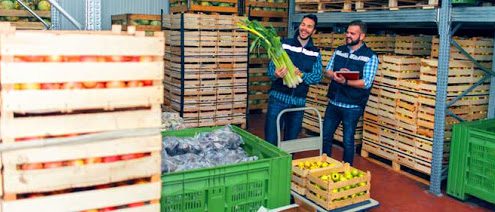
Challenges of Shipping Fresh Produce
The job of shipping fresh produce is a big one, chalked full of a variety of challenges. Dealing with produce means it’s always peak growing season for some crop. It is now a race against the clock to process the produce quickly and prepare it all for shipping.
However, things do not always go according to plan especially when it comes to weather situations. The weather could be perfect at harvest time, but a snowstorm or hurricane could halt traffic in and out of the destination point. So now what?
Shippers will begin scrambling to see where a load of fresh produce can go to avoid it spoiling on the dock on in transit. Everyone keeps a close eye on the weather to forecast if a harvest will come in ahead of schedule. Inclement conditions and natural disasters also take a toll on produce shipments.
Seasonal demands factor into shipment capacity, especially if a crop schedule is off by a few days or weeks. In most cases, a dedicated shipper will have to flexibility to get everything done in time. However, this not a guarantee so shippers should not take it for granted. Good communication between the shipper and trucking company is a good way to gauge what is possible when things change.
Another challenge in shipping fresh produce is the distance from the point of origin to the final destination. According to the Logistics Bureau, fresh produce averages about half its shelf life on a truck. Therefore, produce with a short shelf life only has maybe a day of freshness remaining once it reaches the market. If all things are perfect, this is not a lot of time for consumers to maximize the freshness. However, it drives the point home to the urgency needed when it comes to shipping fresh produce.
The Demand for Fresh Produce
So where do consumers purchase fresh produce? The answer to that question includes grocery stores, fresh markets, specialty markets and the growing trend of meal kit services.
It is a matter of preference when it comes to shopping for seasonal fruits and vegetables. While some consumers want to touch and feel the produce they select, others rely on fresh selections arriving on their doorstep.
Regardless of the venue, fresh produce arrives at each site on a regular basis to keep up with the growing demand. As more people focus on healthier lifestyle choices, many are turning to good old fruits and vegetables to help curb appetites. Now the search is on to find the freshest available to add in a new recipe.
Traditional grocery stores typically display seasonal and locally grown produce prominently with additional bins stocked full of other produce staples. Likewise, the fresh produce sections at specialty markets are alive with the vibrant colors of the seasonal harvest. However, the two retailers may vary the quantity of produce on hand based on traffic. Shipping fresh produce to a large grocery store may involve several trucks making a delivery often within a week. In contrast, a smaller marketplace may schedule one delivery per week with limited amounts of certain items. In each case, the shipper is working closely with the stores to determine what produce is needed and how soon a truck can arrive to replenish the shelves.
The increase of meal kit delivery has also stretched the demand to ship fresh produce. The kits are popular with those who lack the time or desire to do the shopping but want to have a tasty meal. The kits include all the ingredients, right down to the fresh peppers, tomatoes or other items. Once picked, fresh produce needs to move quickly.
Healthy Lifestyles Depend on Produce
In recent years, trends show more of us are paying close attention to exactly what we eat. Today, the push to find healthier food has translated into more people looking to discover meal options on the produce aisle.
Awesome! It means people are eating healthy and striving to take care of themselves and their families. The result is more produce shipments need to be available to stay in step with the increasing demand. All those healthy plates have space to include an assortment the season’s bounty and explore other items.
Then there are the variety of smoothies that call for everything from bananas to kale for a boost of good energy. Next, use any combination of fresh produce to create other tasty drinks through juicing. The produce possibilities are endless.
Make a great salad using whatever produce you want, there is really no right way to make a salad. Yes, put in whatever you like! Then dive in and enjoy the burst of flavors grown in a number of different areas of the country.
Is there a specific type of produce that you have not been able to find at the market? Why not take a moment to ask someone on staff if they can get it in stock. Rest assured, if a crop is in season near or far chances are good the item ships. The risk may be dealing with cost and shelf life on it arrives.
The health benefits of produce are up for debate, especially regarding organics. Take a close look at signage in the marketplace to see if the label reads organically grown. The niche market of organics is also a growing trend in produce shopping. Regardless of whether shopping for regular produce or organic varieties, they all have a short window of freshness.
Restaurant Produce
When mom said, “eat all of your vegetables;” she meant the ones on your plate at the family dinner table and those served at a restaurant. So no escaping the veggies while eating out.
Wholesale produce shippers fulfill daily orders for restaurants too. Send in the tomatoes, potatoes, eggplant and the rest of the list. Diners are familiar with the term “served seasonally.” It simply means whatever the seasonal produce is from a local or regional level. Be advised the selection could change depending on what shippers are able to get on a truck headed to a multitude of locations.
Restaurant chefs like working with fresh produce because it allows flexibility to be creative with a dish. Amazing entrees, known as a chef special and not on the menu, are sometimes the result of extra produce on hand. Therefore, a savvy chef, not wanting a handful of produce to go unused, will instead whip up a little bit of delicious. Go ahead and let mom you ate all of your veggies and you enjoyed every bite.
Today, health-conscious diners are requesting more produce options on restaurant menus. The days of the kitchen just receiving a few boxes of tomatoes, carrots, lettuce or cucumbers for salads are gone. In addition to salad trimmings are items like squash, asparagus, and eggplant to name a few.
In order to guarantee the kitchen has enough produce available, chefs and restaurant owners are working to develop networks of locally sourced produce. The daily ebb and flow of produce make it a high priority item for most restaurants.
Fast food restaurants are not immune to the demand for fresh produce items either. Whether ordering extra tomatoes and no lettuce on that burger or an entrée salad, fast food restaurants use large amounts of fresh produce daily.
Produce Moves On Refrigerated Trucks
Keeping produce chilled at the right temperature is one of the most important steps in the entire process. The entire process of shipping fresh produce means juggles many variables like weather conditions.
The refrigerated truck, known in the industry as a reefer, is the workhorse for shipping sensitive freight. If the shipment spends even a few minutes either too cold or too warm it could damage much of the produce or ruin it all together.
Depending on what part of the country is the point of origin or destination, the weather may play a role in how cool the reefer unit needs to be. If transporting during winter months the interior of the trailer may only need a small adjustment to reach freezing range to transport apples or grapes.
In reverse, cold weather outside can make it necessary to warm up the reefer to keep other freight at a balmy 50-60 degrees for bananas and some crops of potatoes. A number of situations can occur such as traffic congestion keeping a truck in a warm climate longer than anticipated. A late truck arriving at the dock can also affect the fragile balance of produce if it’s loaded in the heat of the day versus before sunrise.
As required whenever shipping freight, a bill of lading or BOL, is attached to specify information such as temperature requirements. The driver will need to pay close attention to all gauges and adjust as needed to maintain proper temperatures. If this step is missed and the produce is damaged upon arrival, the delivery can be refused. Ultimately, it could be a costly mistake if temperatures are off by just a degree or two.
Shippers will avoid contracting with trucking companies that fail to make on-time deliveries or disregard instructions regarding temperature ranges. Refrigerated companies with the capacity to handle time-sensitive loads of produce are in high demand.
Connect With ABCO Services
As a leader in refrigerated trucking ABCO Transportation has the capacity to fulfill a variety of services to deliver freight. The company specializes in dedicated trucking for a large number of produce shippers.
Our professional drivers are well- trained and provide excellent, individualized customer service. The ABCO fleet of trucks meet all regulations in compliance with the FMSA and other required safety measures.
ABCO strives to be the go-to company to fulfill a variety of trucking needs. In addition to shipping fresh produce, ABCO Transportation can handle regional, team-expedited, local, and intermodal services for both temperature sensitive and dry freight. ABCO provides a solution designed for refrigerated, dry or power only freight.
 English
English 


